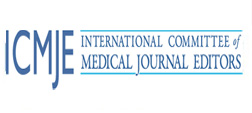Top Links
Journal of Nutrition and Health Sciences
ISSN: 2393-9060
Survival status and factors associated with treatment outcome of severely malnourished children admitted to Ayder referral hospital: a cross-sectional study
Background: Severe acute malnutrition remains the major cause of morbidity and mortality for children under five years of age in developing countries. The prevalence of wasting, underweight and stunting has remained high in Ethiopia and even unacceptably higher in Tigray region. The objective of the study is to assess the survival status and treatment outcome of patients with severe acute malnutrition and to identify contributing factors for poor treatment outcome.
Methods: An institutional-based cross-sectional study was conducted on 195 patients, selected using systematic random sampling technique, from 24-Mar-2015 to 7-Jun-2015 in Ayder Referral Hospital. Logistic regression was carried out to identify factors associated with treatment outcome. Rates of mortality associated with the disease were determined using Kaplan-Meier survival analysis. A Log Rank, Breslow, and Tarone-Ware test were employed for the overall comparisons of the survival curves. Statistical significance was declared at p – value < 0.05.
Result: Out of 195 children admitted with SAM, the cure, death, defaulter, non-respondent and transferred-out rates were 22.1%, 3.6%, 43.6%, 9.2% and 21.5% respectively. Overall, 43.6% of the children were recovered from their disease. The mean length of stay of a ‘recovered’ child in the hospital was 21.56 ±1.27 days (95% CI: 19.04–24.09 days). Free from acute febrile illness (AOR = 4.20, 95% CI: 1.10–16.09, p < 0.036) and usage of deworming medications (AOR = 0.36, 95% CI: 0.14–0.93, p < 0.036) were significantly associated with positive and negative treatment outcomes respectively. Children with > 70% of weight for height (WFH) and mid-upper arm circumference (MUAC) of > 12 cm at admission had a better treatment outcome than children with WFH of ≤ 70% (p < 0.038) and MUAC of ≤ 12 cm (p < 0.090). Treatment using ready-to-used therapeutic food (RUTF) provided a longer all-cause mortality protection than the treatment using F-75 and F-100 (p < 0.010).
Conclusion: The cure rate in this study was found to be sub-optimal. Absence of acute febrile illness and deworming medication use were factors contributing to good treatment outcome. A WFH of <70%, MUAC of ≥ 12 cm and treatment using RUTF provided a longer all-cause mortality protection.













